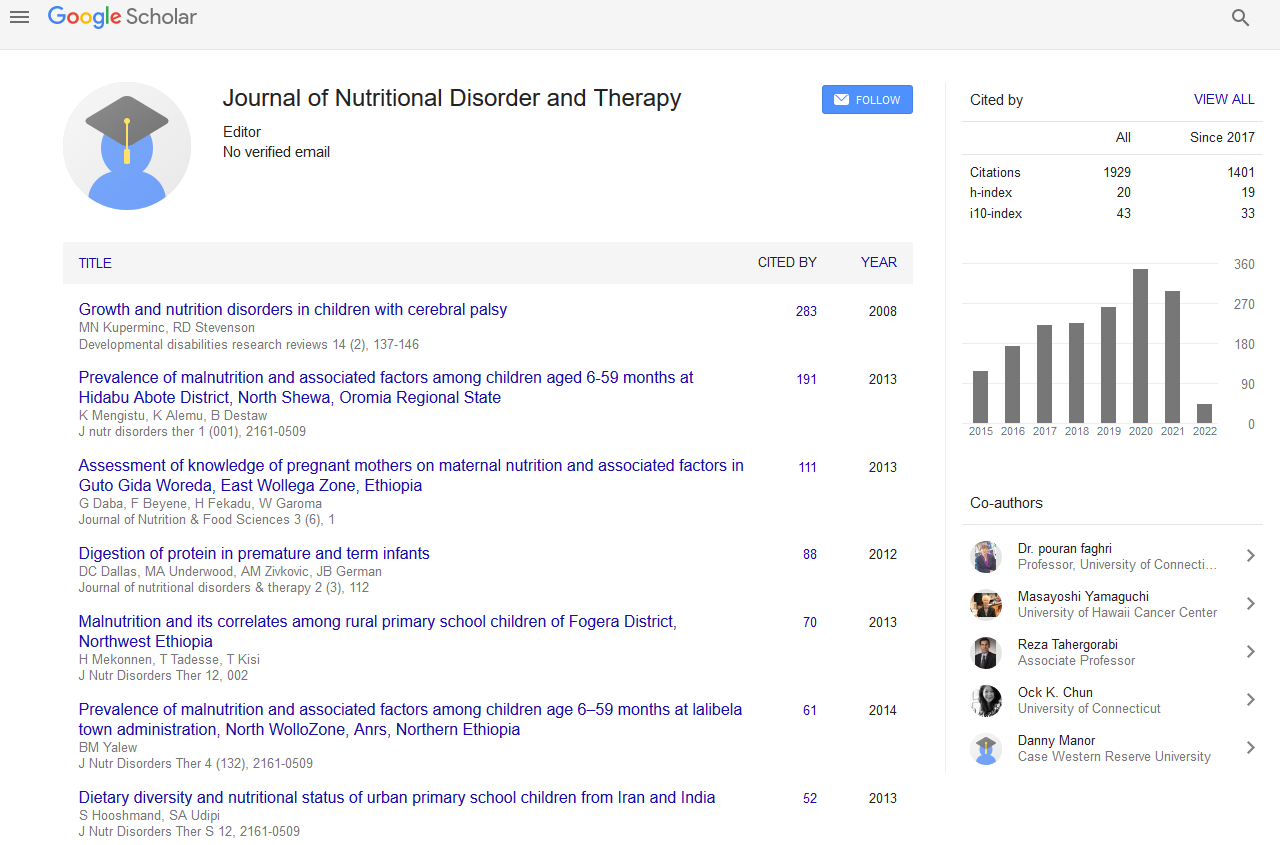Indexed In
- Open J Gate
- Genamics JournalSeek
- Academic Keys
- JournalTOCs
- Ulrich's Periodicals Directory
- RefSeek
- Hamdard University
- EBSCO A-Z
- OCLC- WorldCat
- Publons
- Geneva Foundation for Medical Education and Research
- Euro Pub
Useful Links
Share This Page
Journal Flyer

Open Access Journals
- Agri and Aquaculture
- Biochemistry
- Bioinformatics & Systems Biology
- Business & Management
- Chemistry
- Clinical Sciences
- Engineering
- Food & Nutrition
- General Science
- Genetics & Molecular Biology
- Immunology & Microbiology
- Medical Sciences
- Neuroscience & Psychology
- Nursing & Health Care
- Pharmaceutical Sciences
Abstract
Undernutrition Risk, Overweight/Obesity, and Nutritional Care in Relation to Undernutrition Risk among Inpatients in Southwestern Saudi Arabia. A Hospital-Based Point Prevalence Study
Atika Khalaf, Vanja Berggren, Hazzaa Al-Hazzaa, Staffan Bergström and Albert Westergren
Background: Undernutrition is a problem in institutional care, where 20–46% of all inpatients are classified as being “at nutritional risk”. This study explores the prevalence of undernutrition risk and overweight/obesity and the targeting of nutritional care in relation to undernutrition risk among inpatients in southwestern Saudi Arabia.
Methods: A cross-sectional, point prevalence study was carried out in a Central hospital in southwestern Saudi Arabia. The subjects were inpatients, over the age of 18 who had their nutritional status assessed. Moderate/high undernutrition risk was defined as the occurrence of at least two of: weight loss, low BMI, and/or eating difficulties. Overweight/obesity was graded by using Caucasian and Asian cut-offs for BMI.
Results: Out of 219 patients 166 (76%) agreed to participate (106 men and 60 women) with a significantly higher drop-out among women (n=35, 37% vs. men n=18, 14%). There was no significant difference in the prevalence of moderate/high undernutrition risk between men and women (40% vs. 38%) but more women (29% or 40%, depending on cut-off) than men (10% or 23%) were obese. Among patients at moderate/high undernutrition risk, more women (61%) than men (31%) were served small portions.
Conclusions: There is a need to increase awareness about nutrition among nurses, to implement nutritional guidelines and to do more research regarding overweight/obesity among the female population. Motivational strategies need to be developed to focus on increasing the Saudi female participation in research.


